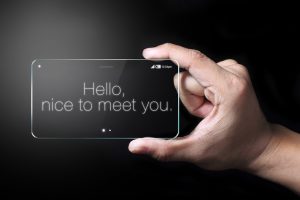 Catching a contact that’s just about to leave your web page, exchanging a small gift for contact data, presenting company’s philosophy – these are the situations in which pop-ups work best. As surprising eye-catchers, they cannot be and have not been equaled by any other website marketing tool. But what can replace them if, you feel in your bones it’s not a time for the heaviest artillery yet?
Catching a contact that’s just about to leave your web page, exchanging a small gift for contact data, presenting company’s philosophy – these are the situations in which pop-ups work best. As surprising eye-catchers, they cannot be and have not been equaled by any other website marketing tool. But what can replace them if, you feel in your bones it’s not a time for the heaviest artillery yet?
Spoiler alert! Pop-up has a “younger brother” that goes by the name sidebar, that is a small box that pops from behind the edge of the page, encouraging to some action. You do not have to check in google to see it – just take a look at the left side of the window (or bottom, if you read these words on the smartphone). The colored bar with social media icons on it (so you can share this awesome article with friends) – that’s a sidebar.
Despite its apparent simplicity, this website marketing tool is sometimes capable of doing much more than it’s more gaudy kinsmen. While wandering on different websites, you must have seen various examples of its application. The most important and most efficient may include:
- gathering contact data, e.g. newsletter opt-in,
- engaging readers into other brand’s communication channels, like social media,
- extending the created experience by showing complementary items or related articles,
- warming brand’s image, by introducing real people that create it,
- progressive profiling, which is asking for the data that lacks in the CRM but at the pace that corresponds to contact’s engagement level.
Theoretically, all of the above can be done with a tailored dynamic pop-up. However, not everyone will appreciate it and react according to the designed scenario. That’s why your primary strategy should be followed by another one, that will be a little bit less noisy and razzle-dazzle.
Even though it doesn’t engage your full attention, this small window that appears next to the content, is still present and waiting like an obliging butler for a moment when the person will be ready to use its help, to, for example, find an article describing the incomprehensible concept in the text you are reading, some examples of other uses of the viewed object or the author’s bio. Alternatively, to leave the email to stay in touch and get notifications about the site updates. Nothing is forced – the decision to act belongs to the user himself.
Here you can see some advantages of the sidebar (if compared to the pop-up): leaving the email in the pop-up is often a result of an impulse so users quickly forget about their decision, or change their minds – therefore the quality of leads obtained in this way may vary. But if we decide that we want to get more involved while browsing the page it is a generally thought decision that we uphold during the first, third and tenth mailing send by a company.
Before implementing the code, you must plan and design the elements as follows:
- purpose
- size
- position
- colors
- icons
- form
- redirection
While the need to design graphic elements seems natural and obvious, the purpose planning might be somewhat confusing. Here’s why you cannot skip this stage.
All website’s bells and whistles should have some function and be designed to achieve this goal. It doesn’t really matter whether your sidebar will collect email addresses, promote additional content or redirect to social media. It’s crucial that each part of it is coherent with other elements, especially with the selected and highlighted call to action. And that’s all. One element – one goal. If you add something more, visitors may get confused and won’t know what to do in a given place.
And that’s all folks! Sidebars are really simple tools for both creation and implementation, and let’s keep them this way. Do you want to have a sidebar on your website? Learn how to create and embed one here:
And if you’re looking for some inspiration, you should definitely check those articles:
 Follow
Follow
















